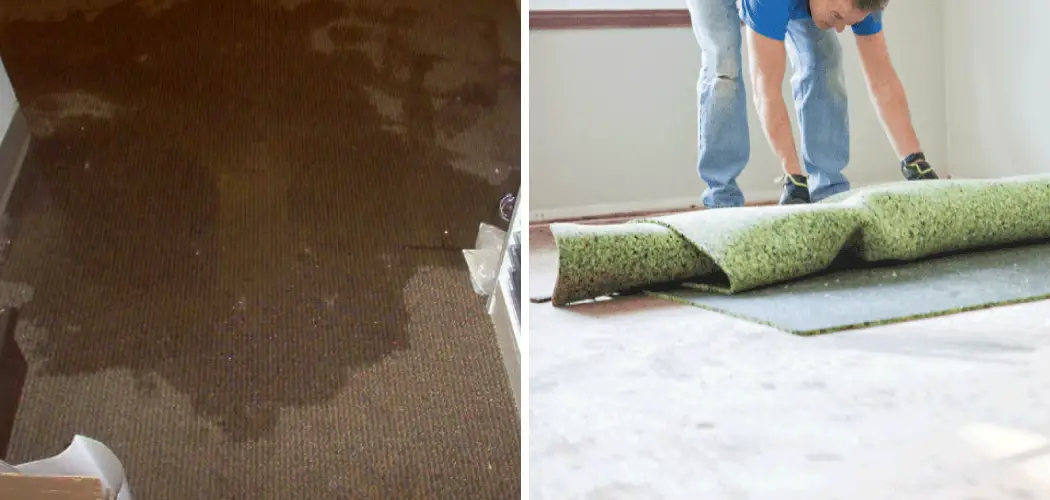It’s never a fun experience to find water in your basement, and it can be even more worrisome if the water has made its way onto your carpet. You must know how to get water out of basement carpet. Not only is there concern about what might have caused the flooding, but now you’re stuck with wet carpeting that needs to be fixed.
If you want to know how to get that moisture out of your basement carpet as quickly and effectively as possible, then read on! Here we will walk through step-by-step instructions so you can get rid of that pesky floodwater and restore the beauty of your carpets.
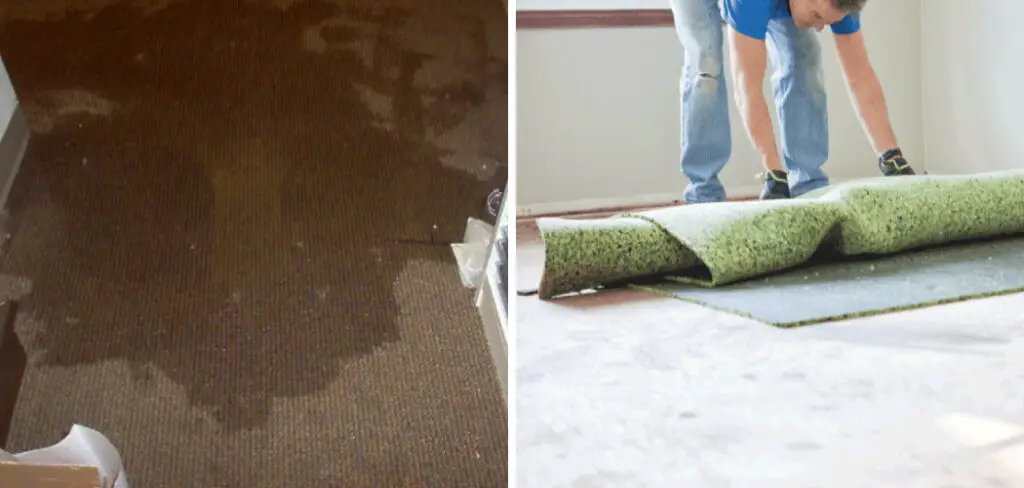
Tools You Will Need
- Towels
- Mop
- Vacuum Cleaner
- Carpet Fans/Dehumidifier (optional)
5 Steps Guide on How to Get Water Out of Basement Carpet
Step 1: Soak Up the Excess Water
Having water in your basement can be a nightmare. Dealing with saturated carpets due to flooding can be overwhelming, but there is a simple solution for this issue: towels! During the clean-up process, it’s important to use absorbent towels to soak up the excess water from the carpets. This will help get rid of the standing water and dry out your carpets.
Most importantly, it will reduce the amount of time you spend dealing with an otherwise difficult home improvement task. Preparation and caution are key when taking on such a project, so make sure you have sufficient towels and cover as much of the carpet surface as possible. With patience and dedication, you can get your basement carpets looking as good as new!
Step 2: Mop Up the Remaining Water
Having a flooded basement is never a good situation, but cleaning up the mess can be made easier with the right knowledge. After flooding, mop up any remaining water, especially in areas where the carpet has been compromised. This will prevent the carpet from further absorbing water, which could lead to even bigger problems down the line. Remove all furniture and décor — moisture that is stuck under these items can cause mold or mildew growth.
To get even more of the remaining water out of your carpet, consider renting a wet vac or shop vac to suck up anything residual. Be sure to move slowly so as not to damage threads of the fabric; this process may take some time and a few rounds if you’re dealing with particularly damp carpets. Taking the proper steps to adequately dry out your carpets will decrease future repairs or replacements down the line which will save money in the long run.
Step 3: Vacuum Up the Carpet
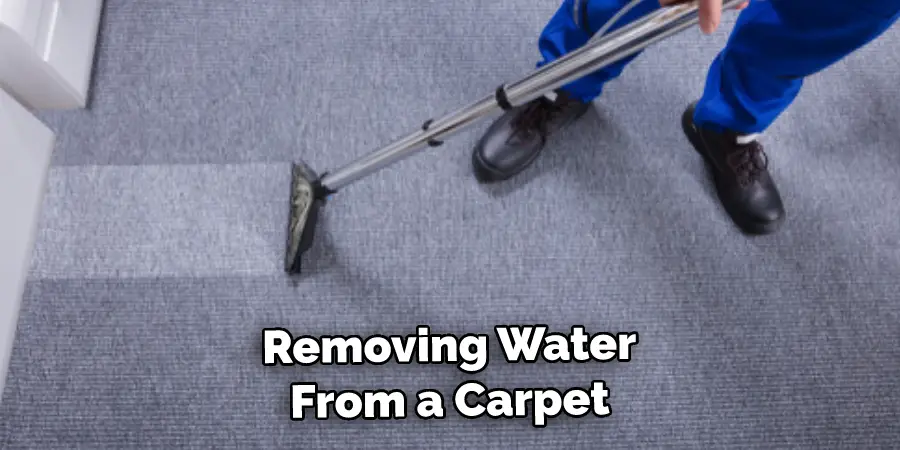
Taking the right steps to ensure the structural integrity of your home after water damage is critical, and our experienced professionals understand that process. Vacuuming it up is one of the most important parts of removing water from a carpet. Not only does vacuuming get rid of any standing liquid before the responders arrive, but it also helps remove any loosened dirt and debris from storm-related floods or overflows.
Even if you think there isn’t anything in the carpet, vacuuming helps reduce bacteria proliferation and stop ongoing fungal growth that can compromise your home’s air quality. Doing this quickly and efficiently will help you protect your family and prevent further damage to your carpets, furniture, and belongings.
Step 4: Place Fans and/or Use a Dehumidifier
Maintaining a dry basement is essential for a healthy home, and keeping water out of the carpet can prevent costly repairs. Using fans or setting up a dehumidifier will help draw moisture from your basement. If you’ve noticed significant moisture in the carpet, using both methods is best. Placing one or more fans near the wet area can help speed up the evaporation process and reduce standing water.
Adding dehumidifier units will increase airborne circulation to further fight off dampness in the carpet and redistribute it as harmless vapor throughout your basement. Long-term use of these simple tactics will help keep your basement dry and make sure it stays that way!
Step 5: Wait for the Carpet to Dry
Once you have taken all of the necessary steps, it’s time to sit After a flood or other water event, it’s important to make sure that your basement carpet is completely dry before attempting to remove the water. If it isn’t, all of the efforts you put in to dry out your home will be wasted. Allow the basement carpet and padding to thoroughly dry before trying to pull any moisture out with a wet vac or another device.
You’ll want to use fans and dehumidifiers during this process, too; they can help speed up the drying and make sure that no moisture remains. Make sure to check regularly for hot spots or pockets of steam while drying—these areas contain the most water and need additional attention—otherwise, it may be difficult to get your basement back into an ideal condition afterward!
By following these steps, you should be able to get rid of all of the water that is in your basement carpet. Remember that it is important to act quickly and efficiently when dealing with flooding, as the longer you wait, the more damage can occur to your carpets.

If you need help getting everything cleaned up, don’t hesitate to call a water damage restoration expert for professional help. They will be able to assess the situation and ensure that your carpets are properly dried and restored in no time!
Tips to Get Water Out of Basement Carpet
- The first step in getting water out of your basement carpet is to use a wet vacuum. Wet vacuums are designed specifically for removing water from carpets and upholstery. If you don’t have a wet vacuum, you can rent one from most hardware stores.
- Once you’ve removed as much water as possible with a wet vacuum, the next step is to use fans to help dry out the area. Place the fans around the perimeter of the room and point them toward the center. The goal is to create an airflow that will help evaporate the remaining water.
- In addition to using fans, you’ll also want to use dehumidifiers to help remove moisture from the air. Dehumidifiers work by pulling moisture out of the air and into the unit where it is then collected. This will help to speed up the drying process.
- If your basement has baseboard molding, you’ll want to remove it before starting the drying process. Baseboard molding is often made of wood, which can absorb water and swell, making it difficult to remove once it’s wet. By removing the molding before drying, you’ll make the job much easier.
- To prevent water from seeping under doors, place towels along the bottom of each door leading into the basement. This will help to absorb any water that does come through and keep it from spreading further into the basement.
- If possible, open windows in the basement to allow fresh air to circulate. This will help to evaporate any remaining moisture in the air and speed up the drying process.
- Once your basement is dry, take a close look at all of the pipes and appliances in the area. If any of them were submerged in water, they may be damaged and need to be replaced. Additionally, check for any signs of mold or mildew and have these areas professionally cleaned if necessary.
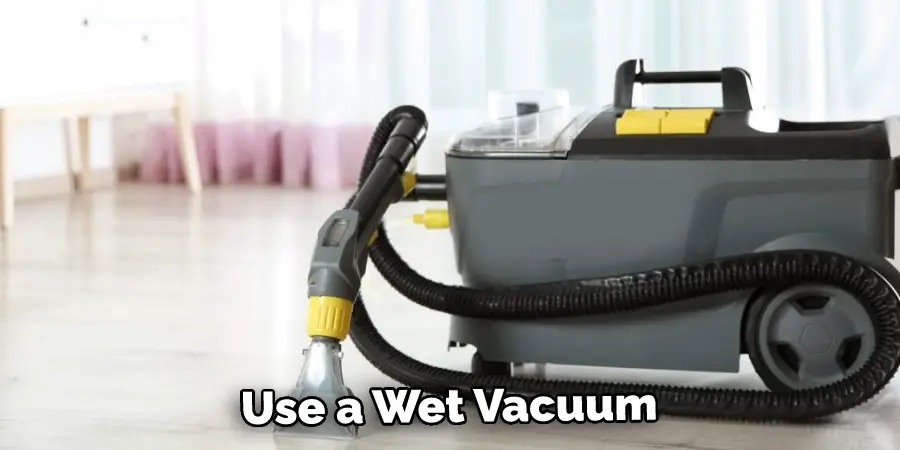
How to Successfully and Quickly Get Water Out of Basement Carpet?
Experiencing a flooded basement can be an extremely worrisome situation. The dirt and debris left after the water has gone can cause significant damage to your carpets, not to mention the unpleasant smell. The best way to address this is to act quickly; the sooner you can get the water out of your carpets the less damage that will be done. The key is removing as much water as possible in the least amount of time.
You can start by using a mop or a wet-dry vacuum cleaner that has strong suction capabilities. This should remove most of the water from the top surfaces and then you’ll need a more comprehensive solution to eliminate deeper, embedded moisture.
Power extraction machines work well here, but if you don’t have one available a non-electric rental soak vacuum and floor squeegee will do the trick. Combined with manual wringing and blotting, these methods should allow you to fully clean your carpet and restore it in minimal time.
How to Use Wet Vacuums, Fans, and Dehumidifiers to Dry Out Your Basement?
Keeping your basement dry is important. Not only does it protect your possessions, but the dampness in the area can also cause structural damage, lead to mold growth, and even attract pests. Wet vacuums, fans, and dehumidifiers are essential tools for restoring a waterlogged basement. To start the process, use a wet vacuum to remove excess water. The vacuum should be emptied several times as you go along.
Next, place several fans throughout the room so that air circulates through the entire space. To prevent re-occurrences of water damage and get rid of the humid air in the room permanently, we recommend installing a dehumidifier to keep the wetness under control all year round.
Ultimately these helpful pieces of equipment ensure your basement is dry and structurally sound when it comes time for rainstorms again!
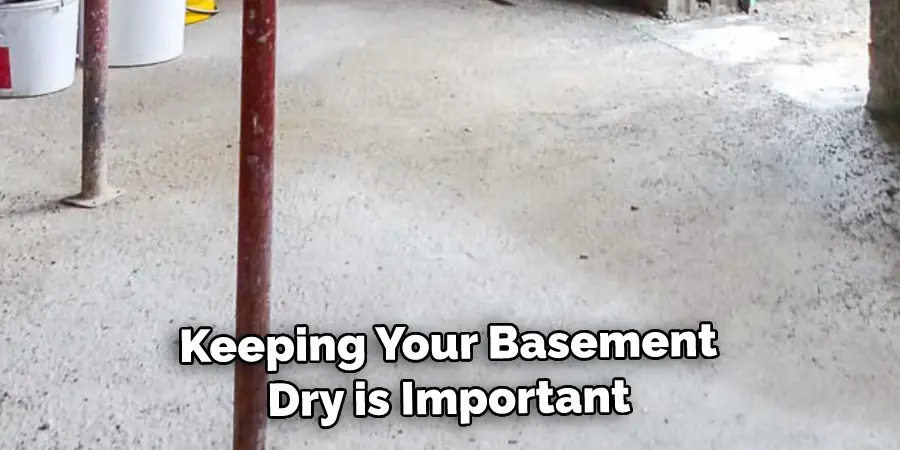
Conclusion
If your basement has ever flooded, you know the feeling of dread that comes with it. No one wants to come home to a soggy, musty mess. But don’t despair! You should carefully determine how to get water out of basement carpet.
There are some steps you can take to minimize the damage and get your basement back to its original state. By following these simple tips, you can ensure that your basement stays dry and free of water damage for years to come.

